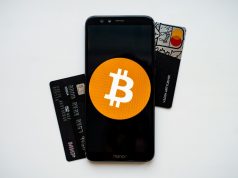Due to the difficulty of trading in any financial market, most new traders end up losing money.
The forex market, often known as the foreign exchange market (FX), is the world’s biggest investment market, with yearly growth rates exceeding 10 percent. For the first time since 2007, the FX market saw a daily average turnover of $4 trillion in April 2010.
In contrast, the New York Stock Exchange’s daily volume is just $25 billion (NYSE). Since currency trading platforms have improved and more retail traders have discovered forex to be appropriate for their financial objectives, the market may be big, but until recently the volume originated from professional traders.
Even though the currency market is officially closed from Friday evening to Sunday evening, currency trading is really open every day of the week. There are three trading sessions: European, Asian, and U.S.-based.
Despite the fact that some of the sessions overlap, the major currencies are traded the majority of the time within the specified market hours. Because of this, there will be more trading activity for certain currency pairings at particular times of the day. The U.S. trading session will have the greatest activity for traders who stick to currency pairings centered on the dollar.
What is Foreign Exchange?
Every year, more and more money is added to the global digital currency. Because it’s so widely used, the US Dollar may be bought or sold for practically any other currency on the market. Since it’s secure, traders may join and leave the market whenever they choose thanks to its high liquidity and wide range of trading options. The OTC (over-the-counter) foreign exchange market, according to FxPro, is accessible via a forex or CFD broker and is open 24 hours a day, seven days a week, from Sunday evening to Friday evening. There is no physical facility or central exchange for the OTC market. A currency pair like the EUR/USD (the US dollar against the EU euro) is traded using contracts for difference (CFDs).
You benefit from the amount of movement that occurs by purchasing or selling the pair before the move starts. If you purchase EUR/USD at 1.1200 and it rises to 1.1400, you’ve made 0.0200 on the trade, for example. This may not seem like much, but when you consider the leverage offered by CFD trading, the profits may easily reach the hundreds of dollars range.
Currency trading may be very challenging, particularly for individuals with no prior experience. Traders that are successful concentrate on three main sessions. These include the trading sessions in Europe, Asia, and the United States. These sessions may run concurrently, however, the most active trading takes place during the hours when these marketplaces are available for trade (when the traders are awake, business hours).
Dollar-based pairings have the greatest activity throughout the U.S. trading session and while the market for the opposite pair is open, so stick with them.
In currency trading, a lot is the usual quantity of units. There will be plenty involved when buying a position, from one to three or even more depending on the size of the transaction you wish to make. Depending on your exchange or regulator, each lot represents a certain amount of a financial product.
Smaller traders and those with lesser risk tolerance may use micro-lots on certain exchanges and brokers.
What Are Pairs and Pips?
There are literally hundreds of currency pairs available for trading; all you have to do is locate the appropriate market or exchange.
When a currency is cheap, purchase it and hold it till it is costly, you may profit. Traders keep an eye on the market utilizing price movement charts to determine whether to purchase or sell. If you are doing most of your forex trading with currency pairs or speculative CFDs, it is not necessary to hold the underlying assets.
A good example is buying 1 lot of EUR/USD if you believe it will rise. If the price rises, you stand to gain since each PIP is worth between $0.10 and $0.20, depending on your level of leverage. If you believe the EUR/USD will fall, you should consider selling a lot of your shares. You’ll make money for each point it falls if it actually goes lower.
What Makes Currency Trading Trendy?
For three reasons, currency trading is popular: the market is accessible, it presents a significant challenge, and it offers the potential for substantial financial gain. It’s an issue that far too many would-be forex traders enter the market without fully comprehending the dangers. Every PIP the pair falls means you lose money if the market moves in the opposite direction of what you expected.
Currency trading has a simple learning curve. Building and executing your own plan is one thing; making it successful is quite another. Getting ahead in currency trading may be as simple as reading some instructive articles or downloading some useful apps from the internet.








